
Als ich diese Branche zum ersten Mal eintrat, Ich dachte, Aber GycxSolar Boss sagte, das sei nicht richtig. Im Gegenteil, Lithium-Ionen-Batterieprodukte sind gefährlicher, mit Risiken wie Explosion und Verbrennung. Jedoch, Batterieprodukte hatten schon immer hohe und komplexe Transportanforderungen in der Logistik.
Aufgrund der einzigartigen Komplexität der Komplexität von LIFEPO4 Solar Battery und der Tatsache, dass nicht alle Logistikdienstleister Sicherheitsbewusstsein und entsprechendes berufliches Wissen haben, um sie in Compliance zu bewältigen, Der Transportverfahren von Lithium-Ionen-Batterien ist voller Variablen und Komplexität. daher, Bitte beachten Sie, dass es bei Express -Lieferung nicht nur darum geht, Lithiumbatterien in Kisten zu legen. Der Transport von Batterien ist eine ernsthafte Aufgabe, und wenn nicht richtig gehandhabt, Es kann zu Explosionen führen, Feuer, und Geldstrafen - mit erheblichen Risiken!
In diesem kurzen Blog -Beitrag, Wir werden die richtigen Methoden für den Batterietransport einführen, einschließlich Verständnisvorschriften, Verpackung, unter anderem. Mit dem richtigen beruflichen Wissen, Sie können LIFEPO4 Solar Battery sicher transportieren.
LIFEPO4 Solar Battery verstehen

LIFEPO4 Solar Battery ist der grundlegende Kern der modernen Stromspeicherung, in Bereichen wie Unterhaltungselektronik häufig verwendet, Automobil, und Industrie. Die leichte und hohe Energiedichte macht es zur bevorzugten Wahl für tragbare und langlebige Strombedürfnisse. Da immer mehr Produkte auf LIFEPO4 -Solarbatterien angewiesen sind, Die Marktnachfrage für sie nimmt ebenfalls ständig zu.
Es ist entscheidend, ein tiefes Verständnis der Klassifizierung von Lithium-Ionen-Batterien zu haben, um einen sicheren Transport zu gewährleisten. Lithiumionenbatterien enthalten verschiedene hochwirksame Substanzen, und ihre chemische Zusammensetzung zu verstehen ist eine der Fundamente.
Gleichzeitig, Es hat eine hohe Energiedichte und erzeugt Wärme während des Betriebs, Dies kann erhebliche Sicherheitsrisiken in begrenzten Kapazitätsräumen darstellen, insbesondere in geschlossenen Räumen wie Behältern während des Transports.
Lithium -Ionen -Batterien gehören zur Klasse 9 von gefährlichen Materialsystemen. Klasse 9 deckt verschiedene Arten gefährlicher Güter ab, einschließlich Gegenständen, die leicht erhitzt und brennbar sind. Lithium -Ionen -Batterien sind in dieser Kategorie aufgrund ihrer Brandgefahr und Anfälligkeit für Überhitzung besonders herausragend.
Dieses Klassifizierungssystem bewertet das potenzielle Risiko von Substanzen und Materialien während des Transports. Unsachgemäßes Handling, Verpackung, oder Lagerung kann zu schwerwiegenden chemischen und elektrischen Gefahren führen, Es ist also wichtig, die Details des sicheren Transports gründlich zu verstehen.
Diese Klassifikationen bieten Logistikanbieter die Merkmale von Waren, Ermöglichen, Gewährleistung der Einhaltung der Sicherheitsvorschriften und zur Verhinderung von Unfällen während des Transports.
Warum benötigt LIFEPO4 Solar Battery spezielle Transportvereinbarungen?
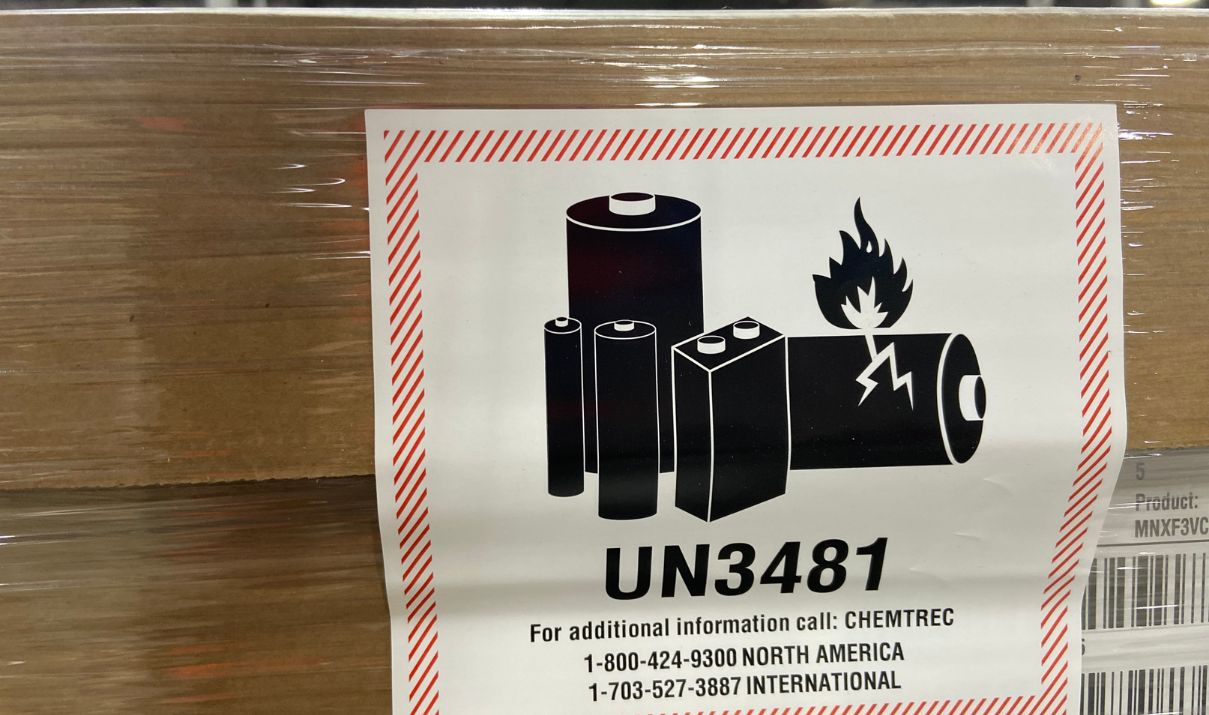
LIFEPO4 Solar Battery Erfordert besondere Vereinbarungen während des Transports, da eine unsachgemäße Behandlung zu schwerwiegenden Folgen führen kann.
Wenn die Batterie beschädigt oder kurz geschaltet ist, Es kann thermische Ausreißer verursachen, kann zu einem Brand oder einer Explosion führen. Dies kann nicht nur Schäden für das Handlingspersonal oder das Notfallrettungspersonal verursachen, aber auch zu schädigen der fracht, und das Feuer kann sich sogar auf den Ladungsstand des Flugzeugs oder des Schiffes ausbreiten.
Wenn während des Transports ein Feuer auftritt, vor allem aus Luft, Notlandung oder Umleitung kann erforderlich sein, Erhöhen des Risikos und der Komplexität des Transports. Zusätzlich, Wenn Sie gegen die Batterietransportvorschriften verstoßen, Sie können auch regulatorische Geldstrafen zahlen oder Transportrechte verlieren.
Aufgrund seines hohen Risikos, Lithiumbatterien werden als Klasse eingestuft 9 gefährliche Güter. Und andere Arten von Batterien können zu anderen Kategorien gefährlicher Waren gehören. Batterieprodukte müssen die Verpackung entsprechen, Beschriftung, und Vorschriften für Mengenbeschränkungen.
Wie können LIFEPO4 -Solarzbatterien transportiert werden?
LIFEPO4 Solarbatterie kann von allen vier Haupttransportmetern transportiert werden, die in der Logistik verwendet werden: Luft, Meer, Straße, und Schiene. Jedoch, Verschiedene Transportmittel können unterschiedliche Vorschriften und Anforderungen haben.
Im Folgenden werden wir allgemeine Richtlinien einführen, die für alle Transportmittel anwendbar sind, Dies kann durch Überprüfung spezifischer gefährlicher materieller Vorschriften in den folgenden Branchen erhalten werden, um detailliertere Informationen zu erhalten:
Luftfracht: Internationale Luftverkehrsvereinigung gefährliche Warenvorschriften und Internationale Luftverkehrsvereinigung Lithiumbatterie Transportvorschriften (Lbsr)
Ozean: Internationaler maritime gefährliche Warenkodex (IMDG)
Autobahn: Vereinbarung über die internationale Beförderung gefährlicher Waren auf der Straße (ADR)
Eisenbahn: Internationale Vorschriften für den Transport gefährlicher Waren mit der Schiene (LOSWERDEN)
Transportvorschriften für Lithium-Ionen-Batterien
Zwei wichtige Dokumente: Das Testhandbuch für Tests und Kriterien der Vereinten Nationen sowie das global harmonisierte Klassifizierungssystem und Kennzeichnung von Chemikalien (GHS).
Es ist entscheidend, den UN -Standard einzuhalten 38.3 Beim Transport von Lithium-Ionen-Batterien mit Luft, Meer, Straße, und Schiene.
Dieser Standard stammt aus dem Tests und Standards der Vereinten Nationen und gilt sowohl für eigenständige Batterien als auch für Batterien, die bereits in Geräten installiert sind. In Handelssicherheitsbestimmungen, Die Vereinten Nationen haben Richtlinien für den sicheren Transport gefährlicher Waren ermittelt.
Das global harmonisierte Klassifizierungssystem und Markierung von Chemikalien (GHS) Bietet universelle Sicherheitsstandards für Chemikalien. Diese Methode erleichtert den Mitarbeitern, die potenziellen Risiken verschiedener Chemikalien schnell zu verstehen, Gewährleistung des sicheren Handlings, Transport, und Verwendung von Chemikalien, Dadurch der Menschen und die Umwelt schützen.
Ein Standard 38.3: Globale Standards

Das Test- und Standardhandbuch der Vereinten Nationen bietet detaillierte Testmethoden, Standards, und Verfahren für die Klassifizierung gefährlicher Güter.
In dieser umfassenden regulatorischen Anforderungen Regelung, Es gibt ein spezielles Kapitel, das allgemein als UN -Standard bezeichnet wird 38.3, Welches ist der dritte Teil des Handbuchs, Abschnitt 38.3.
Dieser Abschnitt enthält detaillierte Informationen zum Transport von Lithium-Metall- und Lithium-Ionen-Batterien. Diese Vorschriften sind globale Benchmarks, und einheitliche regulatorische Standards sind der Aufrechterhaltung der Sicherheit des Batterietransports von Lithium-Ionen-Batterien förderlich. Regulierungsbehörden auf der ganzen Welt akzeptieren sie im Allgemeinen und entsprechen ihnen.
Wenn Sie über den internationalen Transport von Lithium-Ionen-Batterien nachdenken, Es ist wichtig, die besonderen Einschränkungen zu verstehen, die sich aus ihren inhärenten Gefahren ergeben. Andere detaillierte Anforderungen können je nach Transportmittel und Land/Region, in dem die Batterie transportiert wird, variieren. Es wird empfohlen, die relevanten Abteilungen sorgfältig zu überprüfen und zu konsultieren, um die Einhaltung der Einhaltung zu gewährleisten.
Batterien auf der Straße transportieren
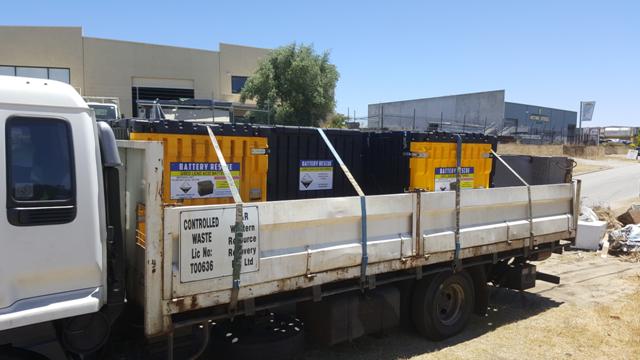
Im Straßenverkehr, Versender müssen den Vorschriften der Lithium-Ionen-Batterie der örtlichen Transportabteilung einhalten, einschließlich entsprechender Verpackung, Beschriftung, und spezifische Mengen und Arten für den Straßenverkehr. Lkw -Transportunternehmen müssen auch detailliertere Vorschriften einhalten, B. das Anbringen von Etiketten an der Außenseite von Behältern und die zeitnahe Meldung von Informationen an die zuständigen lokalen Regierungsbehörden.
Versand von Lithiumbatterien mit Luft
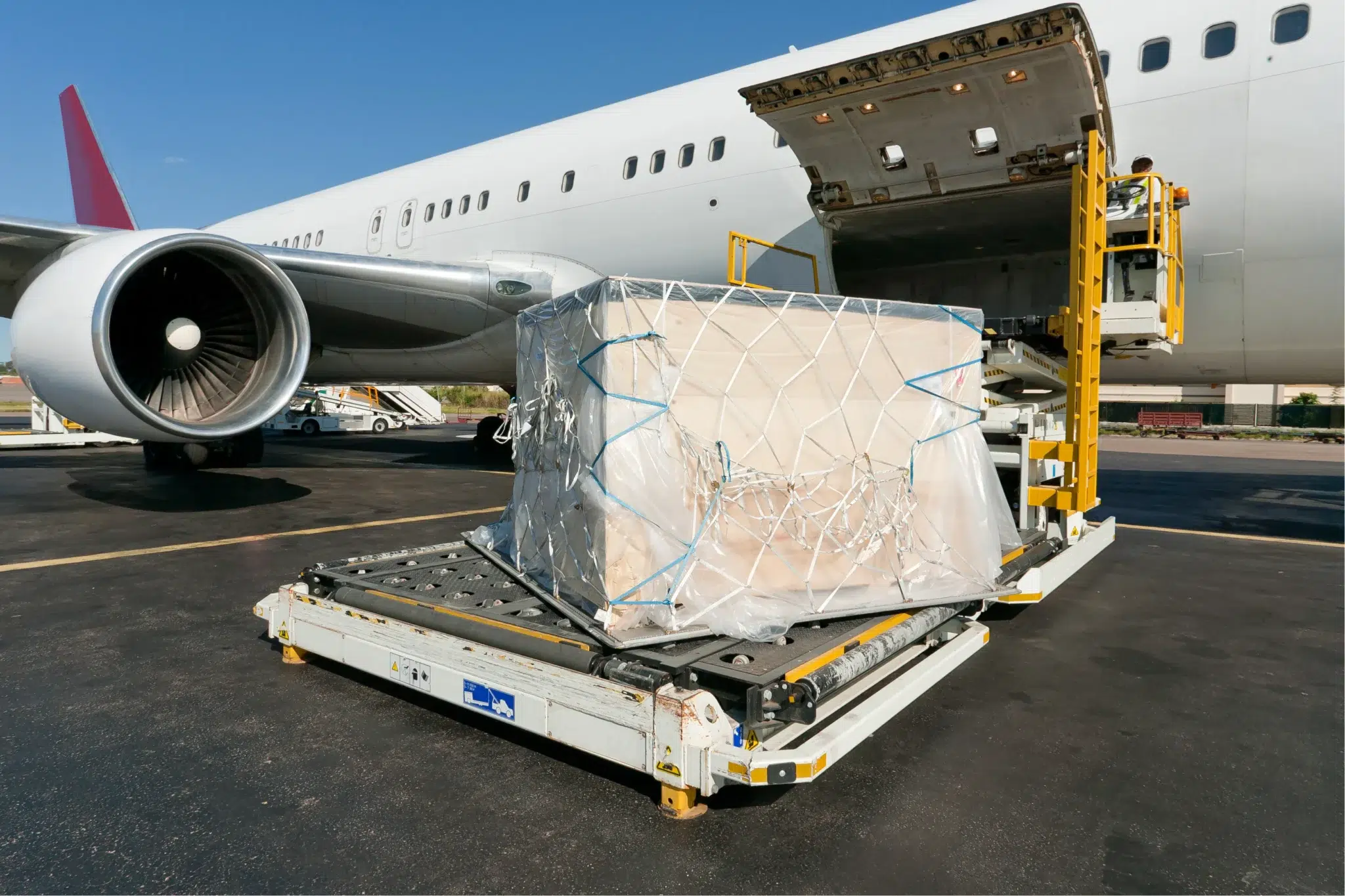
Können Lithium-Ionen-Batterien per Flugzeug verschickt werden? ? Die Antwort ist ja, aber die Konditionen werden etwas höher sein.
Um die Sicherheit beim Versand von Lithiumbatterien auf dem Luftweg zu gewährleisten, Fluggesellschaften werden spezifische Regeln und Beschränkungen festlegen. Unabhängige Lithium-Ionen-Batterien können nicht als Fracht auf Passagierflügen transportiert werden. Aber die in den Geräten verbauten Lithium-Ionen-Batterien können per Flugzeug verschickt werden, Es wird jedoch Einschränkungen hinsichtlich der Anzahl der Batterien und der Art der Ausrüstung geben.
Unabhängige Lithium-Ionen-Batterien können mit Frachtflugzeugen transportiert werden, Sie müssen jedoch vorschriftsmäßig verpackt werden, um mögliche hohe Risiken wie Kurzschlüsse oder Selbstentzündung zu verhindern.
Dazu gehört, jede Batterie einzeln zu verpacken und in eine sekundäre Umverpackung zu legen, um Kurzschlüsse zu verhindern.
Der Ladezustand (SoC) aller Lithium-Ionen-Batteriezellen und -Batterien (UND 3480 nur) darf nicht überschritten werden 30% ihrer Nennkapazität. Batteriezellen und Batterien mit einem SoC-Wert 30% Der Transport kann nur gemäß den von den Behörden schriftlich festgelegten Bedingungen erfolgen, mit Genehmigung des Herkunftslandes und des Landes, in dem der Betreiber ansässig ist.
Für die neuesten und überarbeiteten Vorschriften, Bitte beachten Sie die Leitfäden zum Transport von Lithiumbatterien an Ihrem Standort. Und ob es sich um internationale oder inländische Fracht handelt, Am besten erkundigen Sie sich bei den Fluggesellschaften nach zusätzlichen Anforderungen, die sie selbst angepasst haben.
Lithium Ion Railway Transportation

Der Transport von Lithium-Ionen-Batterien per Bahn erfordert die Einhaltung spezifischer Bahnvorschriften, um Sicherheit und Compliance während des Transports zu gewährleisten.
Es muss der UN-Verordnung entsprechen 38.3: Alle per Bahn transportierten Lithium-Ionen-Batterien müssen strenge Tests bestehen, die im Handbuch für Tests und Standards der Vereinten Nationen festgelegt sind, inklusive Höhe, Temperaturwechsel, Vibration, und Schocktests. Lithium-Ionen-Akkus müssen vorschriftsmäßig verpackt und mit Gefahrenaufklebern gekennzeichnet sein. Um Beschädigungen beim Transport vorzubeugen, Batterien sollten außerdem daran gehindert werden, sich innerhalb der Verpackung zu bewegen (PHMSA).
Für den Schienenverkehr, Der Ladezustand von Lithium-Ionen-Batterien und Akkus darf nicht überschritten werden 30% ihrer Nennkapazität. Höhere SoC-Werte sind nur unter besonderen Umständen mit Genehmigung der zuständigen Behörden des Herkunfts- und Bestimmungslandes zulässig (PHMSA).
Versand von Lithiumbatterien auf dem Seeweg
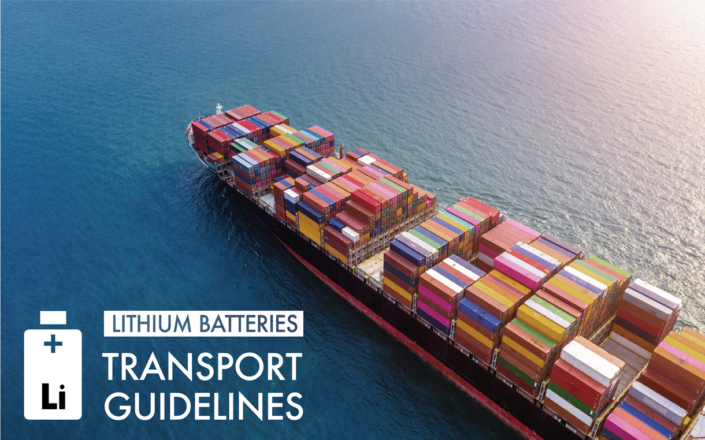
Der Seefrachtverkehr ist der wichtigste internationale Transportweg für Lithium-Ionen-Batterien. Diese Methode unterliegt den internationalen Vorschriften des International Maritime Dangerous Goods Code (IMDG-Code), Dies ist der weltweite Standard für den sicheren Transport gefährlicher Güter auf dem Seeweg. Der Transport von Lithiumbatterien auf dem Seeweg erfordert die Einhaltung internationaler Vorschriften und Richtlinien, um den sicheren Transport dieser potenziell gefährlichen Materialien zu gewährleisten.
Einige Informationen zum Versand von Batterien im Meer:
Der internationale maritime gefährliche Warenkodex (IMDG) Gibt die Klassifizierung an, Verpackung, Beschriftung, und andere Anforderungen an gefährliche Güter zur Vorbeugung von Unfällen und Umweltgefahren.
Klassifizierung des internationalen maritimen gefährlichen Warenkodex:
UND 3480 gilt für unabhängige Lithium-Ionen-Batterien.
UND 3481 gilt für Lithium-Ionen-Batterien im Inneren oder für die Ausrüstung verpackt.
UND 3090 und a 3091 jeweils auf Lithium -Metallbatterien und Lithium -Metall -Batterien gelten oder in Geräten verpackt.
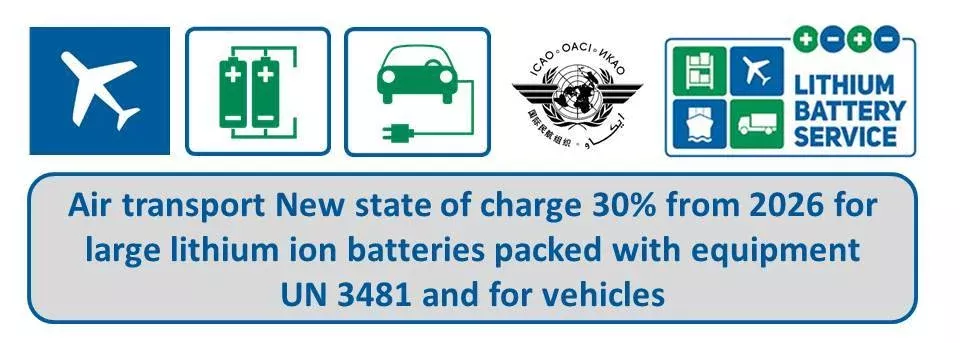
Abschluss
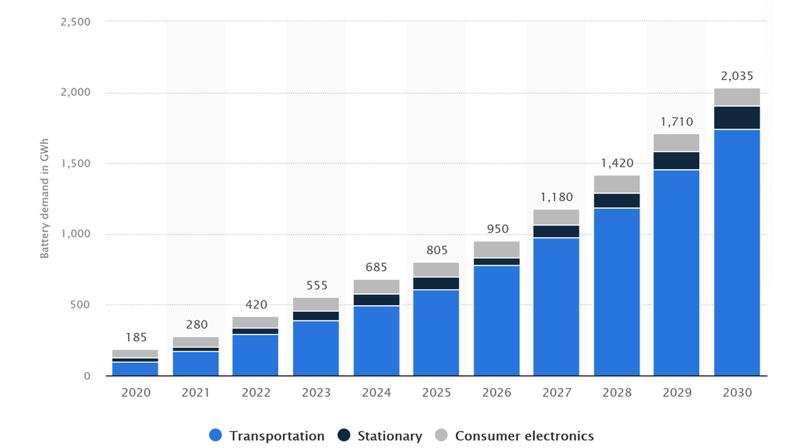
Mit dem Anstieg der weltweiten Nachfrage nach Lithium-Ionen-Batterien, Der Logistiktransport wird auch einer neuen Expansion und Herausforderungen stehen. Die Auswahl der entsprechenden Transportmethode basierend auf Ihrem Standort ist für Ihre Investitionssicherheit von Vorteil,. Manchmal ist der Transport von Lithiumbatterien nicht so sicher, da es bei Seetransporten schon früher zu Ladungsbränden gekommen ist.
Angemessene Auswahl, Verpackung, und Betonung können das Auftreten dieser Risiken reduzieren und den reibungslosen Verlauf Ihrer eigenen Investition sicherstellen.
daher, Der Transport von Lifepo4-Solarbatterien erfordert eine sorgfältige Planung und die Einhaltung spezifischer Richtlinien und Vorschriften des Transportortes, um Sicherheit und Compliance zu gewährleisten. Es wird empfohlen, stets auf die neuesten Updates und detaillierten Richtlinien zu achten, die in offiziellen Dokumenten relevanter Regulierungsbehörden wie der International Air Transport Association zu finden sind, der International Maritime Dangerous Goods Administration, und örtliche Verkehrsbehörden.
